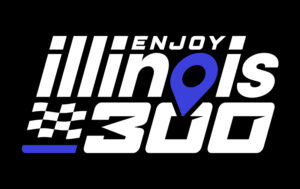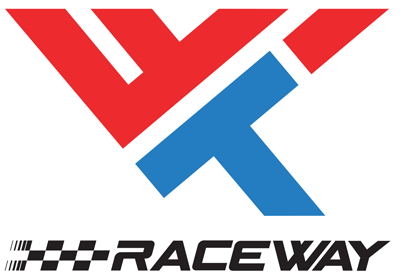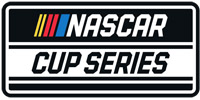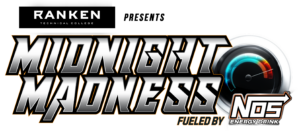A drag race is an acceleration contest, on a track, or dragstrip, that begins from a standing start between two vehicles over a measured distance. A drag racing event is a series of such two-vehicle, tournament-style eliminations. The losing racer in each contest is eliminated, and the winning racers progress until one remains.
These contests are started by means of an electronic device commonly called a Christmas Tree because of its multicolored starting lights. On each side of the Tree are seven lights: two small amber lights at the top of the fixture, followed in descending order by three larger LED lights, a green bulb, and a red bulb.
Two light beams cross the starting-line area and connect to trackside photocells, which are wired to the Christmas Tree and electronic timers in the control tower. When the front tires of a vehicle break the first light beam, called the pre-stage beam, the pre-stage light on the Christmas Tree indicates that the racer is approximately seven inches from the starting line.
When the racer rolls forward into the stage beam, the front tires are positioned exactly on the starting line and the stage bulb is lit on the Tree, which indicates that the vehicle is ready to race. When both vehicles are fully staged, the starter will activate the Tree, and each racer will focus on the three large amber lights on his or her side of the Tree.
Depending on the type of racing, all three large amber lights will flash simultaneously, followed four-tenths of a second later by the green light (called a Pro Tree), or the three bulbs will flash consecutively five-tenths of a second apart, followed five-tenths later by the green light (called a Sportsman, or full, Tree).
Two separate performances are monitored for each run: elapsed time and speed. Upon leaving the staging beams, each vehicle activates an elapsed-time clock, which is stopped when that vehicle reaches the finish line. The start-to-finish clocking is the vehicle’s elapsed time (e.t.), which serves to measure performance. Speed is measured in a 66-foot “speed trap” that ends at the finish line. Each lane is timed independently.
The first vehicle across the finish line wins, unless, in applicable categories, it runs quicker than its dial-in or index. A racer also may be disqualified for leaving the starting line too soon, leaving the lane boundary (either by crossing the centerline, touching the retaining wall or guardrail, or striking a track fixture such as the photocells), failing to stage, or failing a post-run inspection (in NHRA class racing, vehicles usually are weighed and their fuel checked after each run, and a complete engine teardown is done after an event victory).
Pre-Stage Indicator Lights:
Yellow bulbs warn drivers that they are approaching the starting line and the “staged” position.
Stage Indicator Lights:
Signal drivers that they are on the starting line and ready for a run. These yellow bulbs come on when the front wheels of the race car interrupt the beam from a light source to the photo cells. These same photo cells start the timing equipment.
Three Amber Starting System:
All three amber floodlights in a driver’s lane flash simultaneously before the green light comes on. This is called a “pro start” system. Racers running in handicap categories get a countdown of one amber light at a time until the green light comes on. The “pro start” system runs with a .4-second difference between the amber and green lights, while the handicap system runs with a .5-second difference between bulbs.
Green Light:
This is the one that makes it all happen. Once the green light is flashed, the driver in that lane is free to make a run down the track. Any time green light is shown in a driver’s lane it indicates that a fair start was accomplished.
Red Light:
When a car leaves the starting line before the green light comes on, or, in some cases, is staged too deeply into the staging beams, the red light will flash in that lane. It indicates the driver in that lane has been disqualified. During competition, only one red light will light, thus eliminating only the first offender.
NHRA Classes Overview
Top Fuel, Funny Car, and Pro Stock are just three of the more than 200 classes of vehicles featured in NHRA competition. Those classes are grouped into 15 categories, or eliminators, each governed by NHRA rule makers. Class eligibility is based on various requirements and specifications, including type of vehicle, engine size, vehicle weight, allowable modifications, and aerodynamics.
The four Professional categories are Top Fuel, Funny Car, Pro Stock, and Pro Stock Motorcycle. They, along with Top Alcohol Dragster and Top Alcohol Funny Car, the three “Super” classes – Super Comp, Super Gas, and Super Street – and Pro Mod feature a single class of vehicle in heads-up competition. Comp, Super Stock, and Stock are made up of a variety of classes and use a handicap starting system to equalize competition. Top Dragster and Top Sportsman feature a single class of vehicle in bracket-style competition.
Top Fuel
Among the fastest-accelerating machines in the world, these 7,000-horsepower dragsters can cover the dragstrip in less than 3.8 seconds at more than 325 mph. Top Fuel cars are 25 feet long and weigh 2,320 pounds in race-ready trim.
Funny Car
Similar to their Top Fuel counterparts but with a shorter wheelbase and a carbon-fiber body that loosely resembles a production-based automobile, Funny Cars, or “floppers,” routinely run in the 4.0s and can exceed 315 mph.
Pro Stock
Often called “factory hot rods” because of their resemblance to production-based cars, Pro Stockers can run in the 6.4s at more than 210 mph. They can rev to more than 10,500 rpm and make in excess of 1,300 horsepower.
Pro Stock Motorcycle
These highly modified vehicles, which can run under 6.8 seconds at more than 195 mph, feature a purpose-built tube chassis and a lightweight, aerodynamically enhanced replica of original bodywork.
Top Alcohol Dragster
Top Alcohol Dragsters may look like Top Fuelers, but they have significant differences. They may use a supercharged methanol-burning engine or an injected nitromethane combination. They can run in the 5.1s at more than 280 mph.
Top Alcohol Funny Car
Similar in physical appearance to their nitro-burning Funny Car counterparts, Top Alcohol Funny Cars are restricted to the use of methanol fuel and have three-speed transmissions. They can run in the 5.4s at more than 265 mph.
Comp
No category in NHRA competition features more variety than Comp. Each of the 88 classes is assigned an index based on what a well-built car should run, and races are handicapped according to those indexes.
Super Stock
Super Stock vehicles may look like ordinary passenger vehicles, but they are highly modified race cars. Entries are classified using factory shipping weight and horsepower and compete on indexes. The breakout rule is enforced.
Stock
Stock cars are similar to Super Stockers, but rules regarding everything from engine modifications to body alterations are much stricter. Virtually any car is eligible to compete, and entries are classified using factory shipping weight and horsepower.
Super Comp
The quickest of the heads-up Super classes (8.90 index) is composed primarily of dragsters. Most cars are capable of running well under the index but use electronic aids to run close to the index without running quicker than it, or breaking out.
Super Gas
Super Gas entries, which run on a 9.90 index, are primarily full-bodied cars and street roadsters. No dragsters or altereds are permitted. As in Super Comp, competitors use electronic aids to run as close to the class standard without going under.
Super Street
Racers compete on a fixed 10.90 index. All vehicles must be full-bodied cars and weigh no less than 2,800 pounds except for six-cylinder cars (2,000) and four-cylinder and rotary-powered cars (1,200). Engine and chassis modifications are virtually unlimited.
Top Sportsman
Competitors in these full-bodied entries may choose their own dial for eliminations, generally from 6.00 to 7.99 seconds. Full Tree starts are used, and the breakout rule is enforced. Cars can run in the sixes at more than 200 mph.
Top Dragster
Competitors in these open-wheel entries may choose their own dial for eliminations, generally from 6.00 to 7.70 seconds. Full Tree starts are used, and the breakout rule is enforced. Cars can run in the sixes at more than 200 mph.
Pro Mod
An eclectic mix of vehicles, from ’41 Willys coupes to ’63 Corvettes to late-model Ford Mustangs and Dodge Vipers, can run in the high fives at more than 250 mph.




